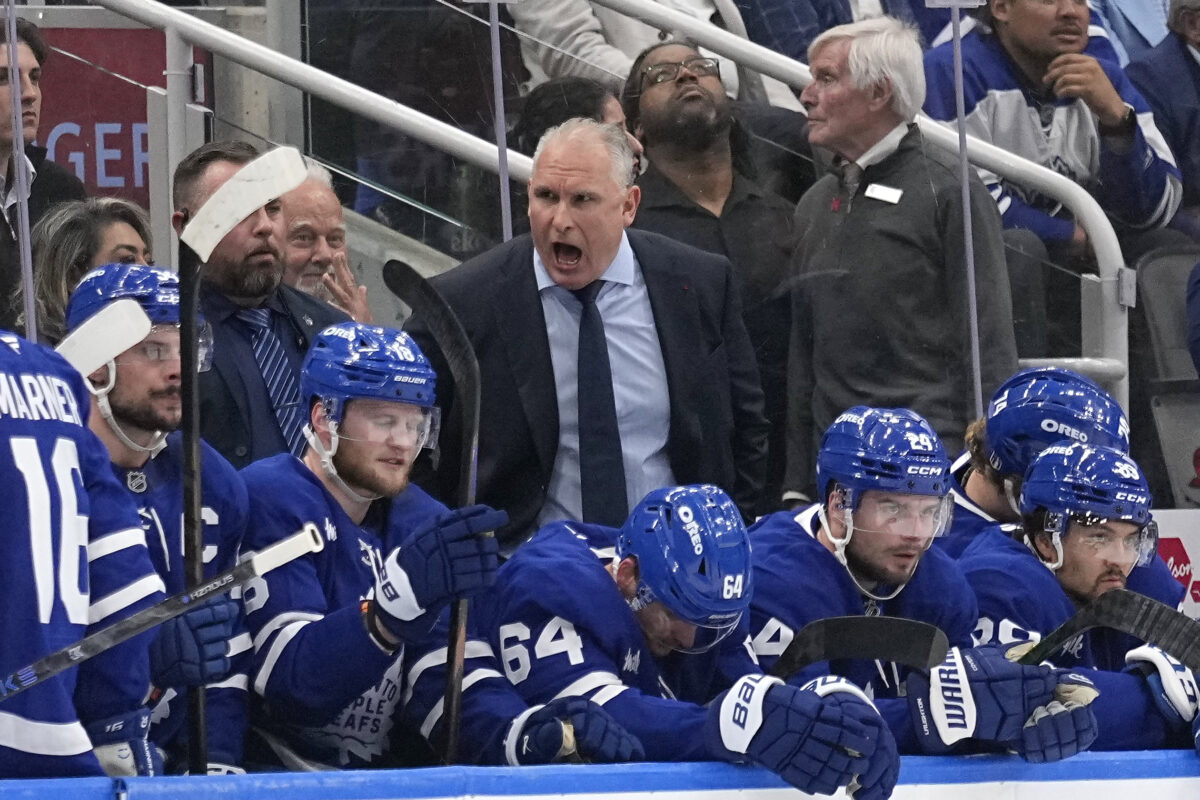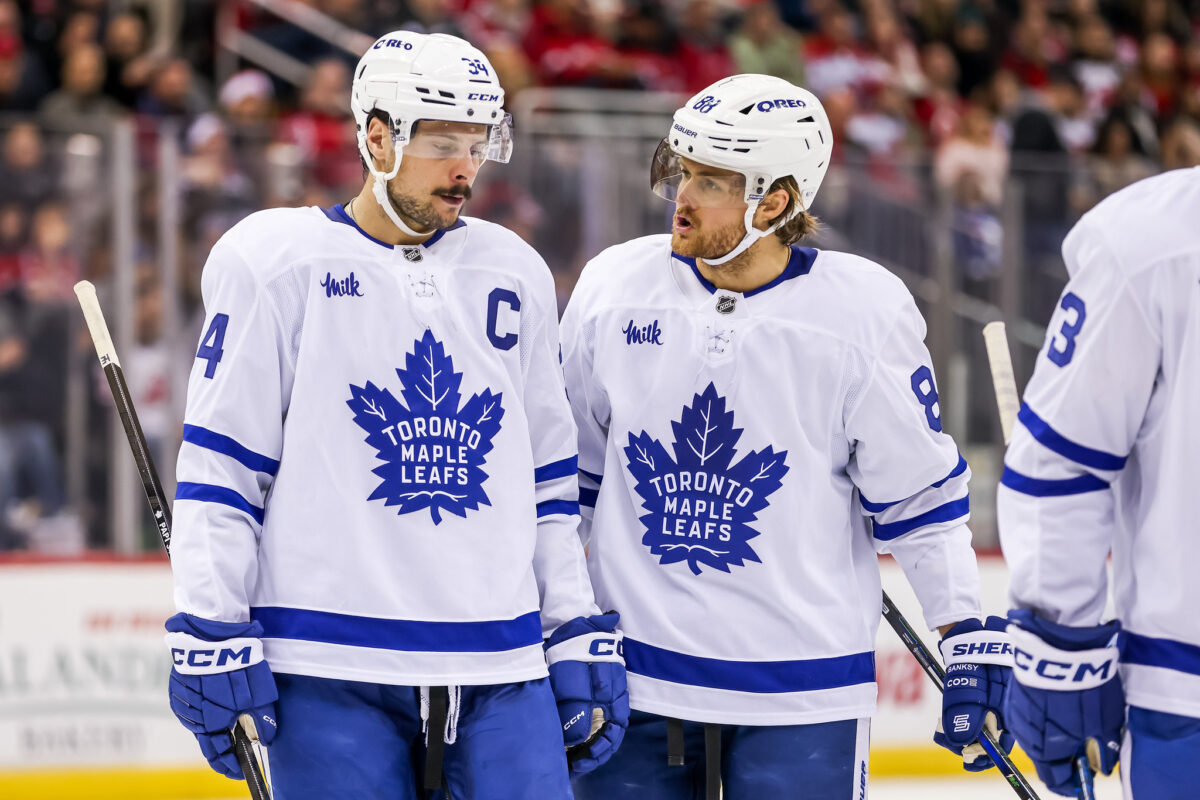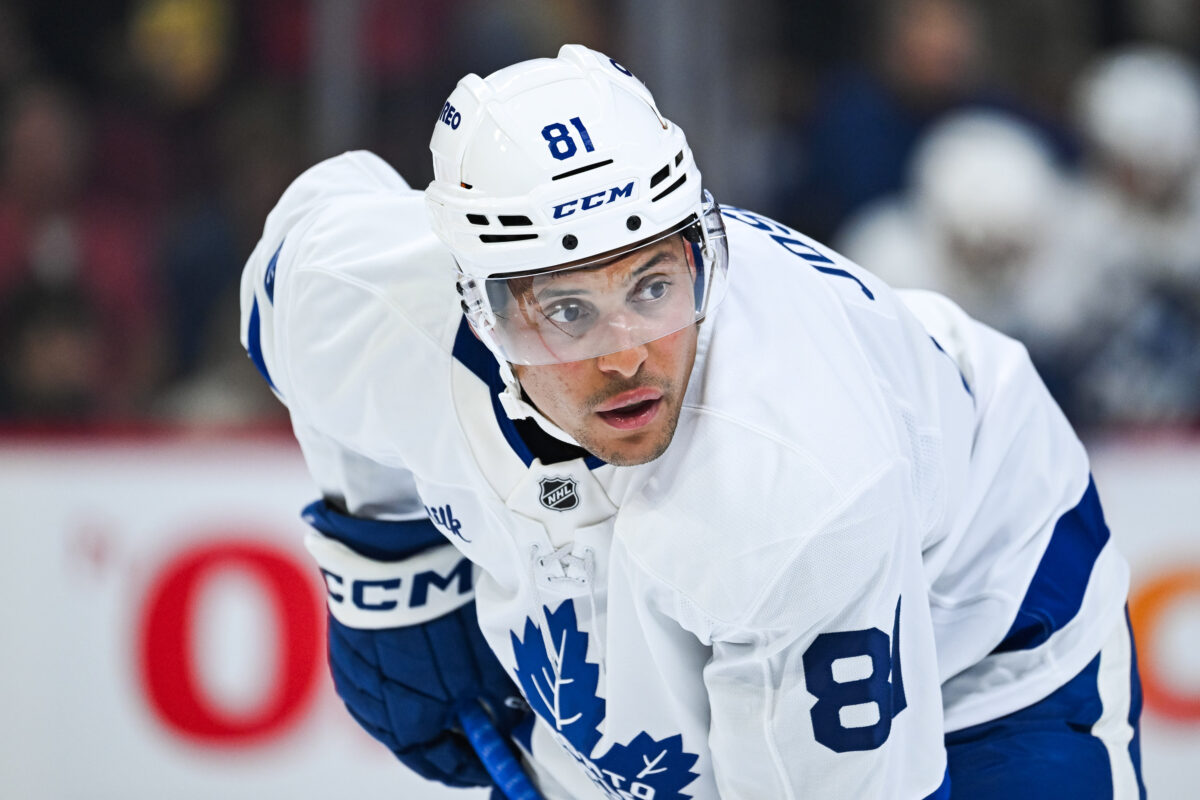You can feel it before you can quite define it. The Toronto Maple Leafs are starting to look like a Craig Berube hockey team. It’s not just in the results, because Saturday’s win easily could have gone either way. It’s in the body language, the weight of their hits, and the quickness of their recoveries.
Related: 2 Takeaways From the Maple Leafs’ 4-3 Win Over the Sabres
The Maple Leafs are beginning to play with purpose. Berube wants a harder, faster, more physical brand of hockey. And for the first time this season, there were signs that the message is sinking in.
The Maple Leafs’ Physical Game Comes Into Focus
This wasn’t a case of the Maple Leafs simply throwing more hits; they threw better ones. The timing, angle, and follow-through all looked more deliberate. There was structure to their physical game — something that’s been missing for years. It’s the first objective evidence of a team trying to play within Berube’s framework, not just reacting to the moment.

Even when the execution wasn’t perfect, the effort was different. Players were finishing checks, closing gaps, and skating with more intent. They’re still a work in progress, but the edges are beginning to sharpen.
Finally, the Maple Leafs’ Line Changes Began to Make Sense
The new line combinations added fresh energy. Auston Matthews, William Nylander, and Bobby McMann showed real chemistry before Nylander’s injury on Friday. When Nicholas Robertson stepped in, he wasn’t out of place. If he had any fault at all, it was because he played a touch too cautiously, perhaps deferring to Matthews.
Related: Revisiting the Wendel Clark for Mats Sundin Trade
Still, it’s clear Robertson has made strides: he’s more physical and more responsible in his own zone than he’s ever been. Those are the kinds of adjustments Berube will reward. Perhaps the end is not coming after all for the diminutive Robertson in Toronto.
Nylander’s Transformation and Its Challenge for Matthews
Before his injury, Nylander looked like a different player entirely. He skated harder, hit more, and carried the puck with urgency. Twice, he chased the play deep into his own zone — a sign of growing commitment. It would be a shame if the injury interrupts that momentum because that’s the version of Nylander that Toronto needs every night.

(Jess Starr/The Hockey Writers)
And that version should serve as a challenge for Matthews. He hasn’t looked quite himself early on, but if Nylander can find that extra gear, Matthews can, too. Berube’s system demands short, intense shifts — 30 seconds of hard skating, physical play, and off you go. It’s a style that rewards commitment more than comfort.
The truth is that Matthews’ linemates last night looked a bit out of synch, but there’s a chance that could change. It’s worth a try.
Tavares Still Leads the Maple Leafs by Example
John Tavares reminded everyone he can still drive a line. Skating with Matthew Knies and Matias Maccelli, he was arguably the team’s most consistent forward over the past two games. Knies continues to grow into a power winger’s role, and Maccelli — who looked like he might be playing himself off the roster earlier — suddenly came alive.
Related: Top 15 NHL Power Forwards
It’s also worth noting that Tavares scored in overtime because he saw overtime ice under Berube, which hasn’t often been the case. With Marner and Nylander typically the first over the boards in the past, Tavares’ re-emergence as a trusted option speaks to how Berube values his poise and reliability.
Finally, the Rise of the Joshua Line
Right behind them in effectiveness was the Nicolas Roy-Dakota Joshua-Easton Cowan line. Joshua is finally starting to look like one of the smartest offseason pickups. He’s big, plays with an edge, and seems to thrive when games get messy. He’s not a Tom Wilson clone, but he brings a similar energy. It’s the kind of energy that changes how opponents feel about crossing the blue line.

That trio has been bringing honest, hard shifts every night, and their influence is being felt. If Berube’s team is going to have a personality, it might come as much from the bottom six as the catalyst.
Looking Ahead for the Maple Leafs
Berube has hinted that Nylander’s injury isn’t serious, and with a couple of off-days before Tuesday’s game against the Calgary Flames, there’s a real chance he’s back soon. That’s good news for a team starting to build an identity around pressure, pace, and physical intent.
Related: Maple Leafs News & Rumours: Tavares, Nylander, Primeau & Depth’s Spark
They’re not there yet, and the old habits still creep in. But for the first time this season, you can see where they’re headed. The hits have purpose. The lines have shape. And the coach’s fingerprints are starting to show. That, more than anything, is what Toronto has been missing for years: a sense of direction that feels earned, not imagined.
[Note: I want to thank long-time Maple Leafs fan Stan Smith for collaborating with me on this post. Stan’s Facebook profile can be found here.]
